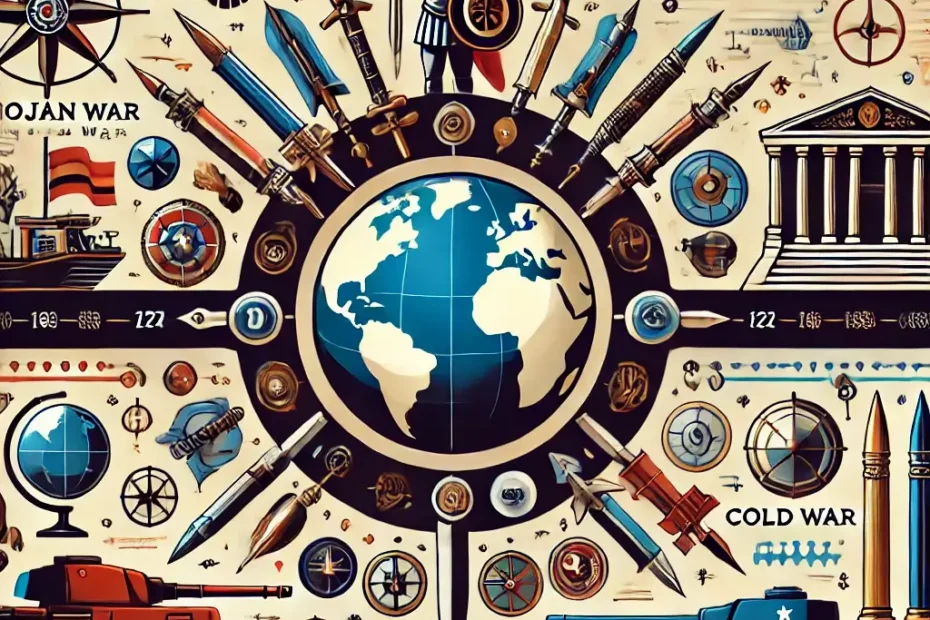Global War in History: Wars have shaped the course of history, influencing borders, economies, and societies. Global wars show patterns in conflict and resolution. They shape our modern world.
Wars, from the Trojan War to today, show our fight for power, survival, and peace.
This article explores major wars. It covers the first global war, a timeline of global conflicts, and the changing nature of warfare. We aim to understand how these events affected global development.
Let’s explore the key events that changed civilizations. They hold lessons for us.
Source Reference:
- Britannica: History of Warfare
- Our World in Data: War and Peace
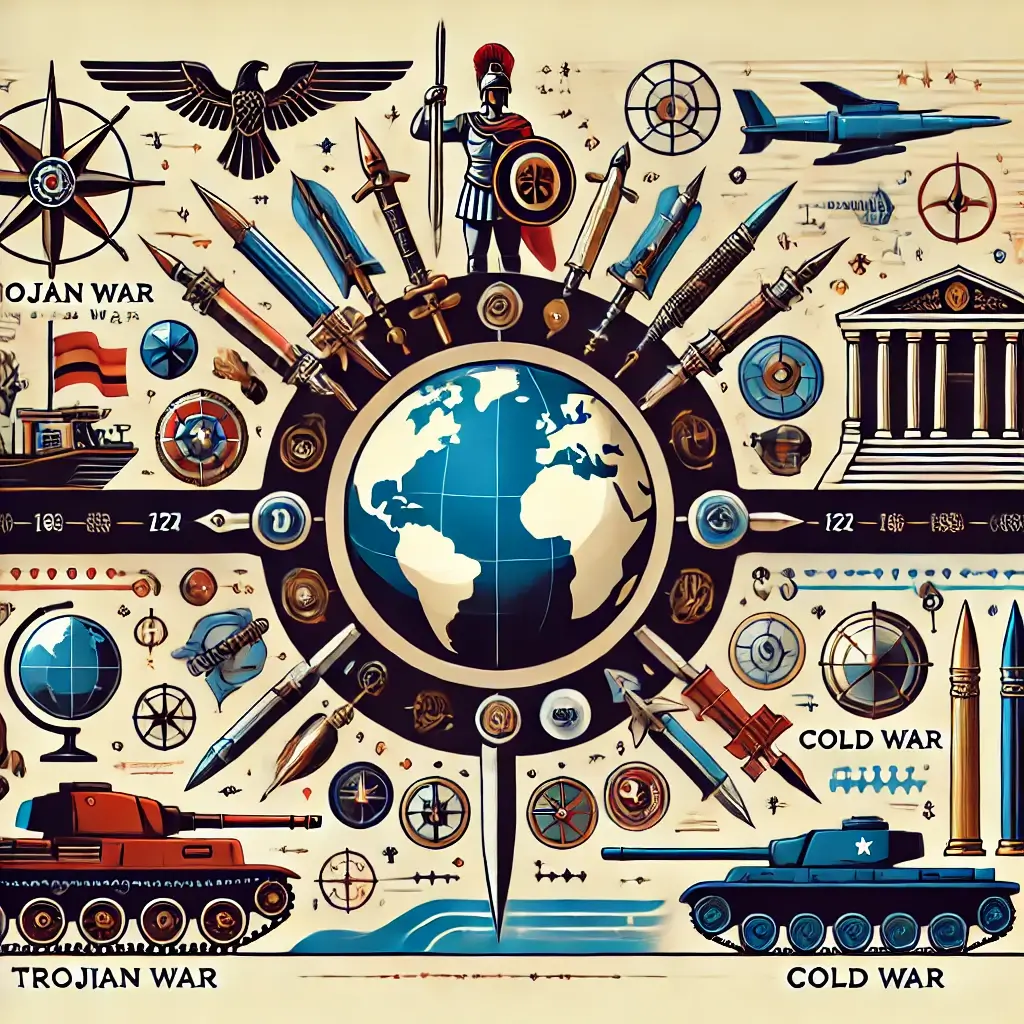
What Was the First Global War in History?
The Seven Years’ War (1756–1763) is recognized as the first global war in history. This conflict involved battles on five continents: Europe, North America, South America, Asia, and Africa. Unlike earlier wars, the Seven Years’ War was global. It affected politics, economies, and societies worldwide.
Why Is the Seven Years’ War Considered the First Global War?
The term “global war” applies to conflicts involving multiple regions and nations. The Seven Years’ War fits this description because:
- It drew in major European powers like Britain, France, Austria, and Prussia.
- Battles occurred in colonial territories, such as India and the Americas.
- Economic and territorial competition between empires turned this war into a global struggle.
Key Causes
- Colonial Rivalries:
- Britain and France clashed over control of territories in North America and India, where resources and trade routes were critical.
- For example, the struggle for the Ohio Valley in North America sparked significant conflicts.
- European Alliances:
- Rivalries between European nations like Austria and Prussia turned regional disputes into continent-wide wars.
- Economic Motivations:
- Control of lucrative colonies drove nations to fight for dominance, especially in the sugar-rich Caribbean.
Impact and Legacy
- Territorial Gains:
- The Treaty of Paris (1763) marked the end of the war, granting Britain significant territorial acquisitions, including Canada and parts of India.
- Economic Strain:
- War debts in Britain and France led to increased taxation, eventually sparking revolutions like the American War of Independence.
- Global Power Dynamics:
- Britain’s rise as a global superpower set the stage for its empire’s dominance in the 19th century.
Impacts of the Seven Years’ War
| Impact | Description |
|---|---|
| Territorial Changes | Britain gained Canada and parts of India |
| Economic Consequences | Increased taxation led to colonial unrest |
| Global Diplomacy | Marked a shift in European alliances |
Affiliate Link
Learn more about the Seven Years’ War and its global impact here.
References:
- Britannica: Seven Years’ War
- History.com: First Global War
- National Archives: Treaty of Paris 1763
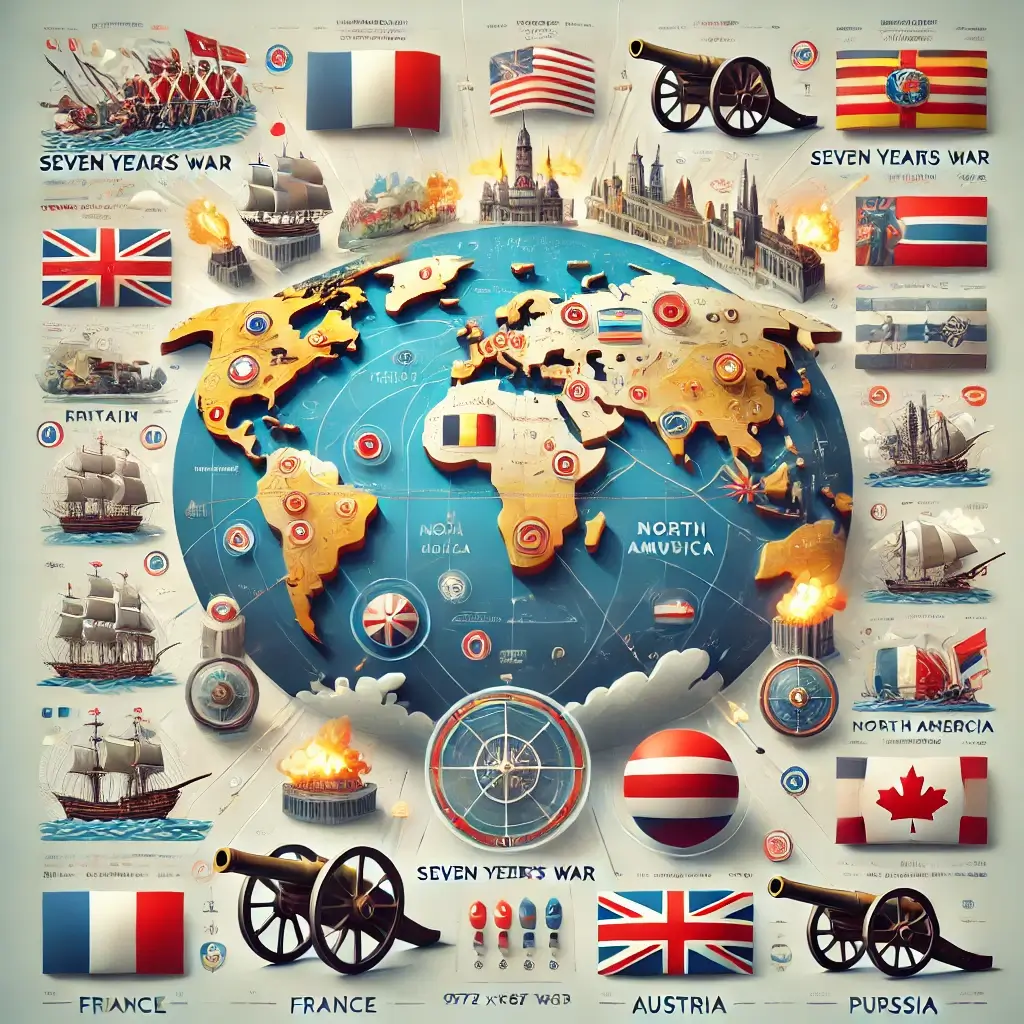
List of the 10 Most Important Wars in History
The history of global wars or major wars in history includes countless conflicts. Some, though, stand out. They have a profound impact on humanity. These wars changed politics and affected cultures, economies, and societies. Here is a detailed list of the ten most significant wars in history and their enduring legacies.
1. The Trojan War (Approx. 12th Century BCE)
- Cause: This legendary conflict between Greece and Troy is believed to have been sparked by the abduction of Helen.
- Impact: Immortalized in Homer’s Iliad, it remains a cornerstone of Western literature and mythology.
2. The Greco-Persian Wars (499–449 BCE)
- Cause: The Persian Empire’s attempts to conquer Greek city-states led to a series of conflicts.
- Impact: These wars preserved Greek independence, shaping the course of Western civilization.
3. The Crusades (1096–1291)
- Cause: Religious fervor drove European Christians to attempt to reclaim the Holy Land from Muslim control.
- Impact: The Crusades opened cultural exchanges between Europe and the Middle East but also deepened religious divides.
4. The Hundred Years’ War (1337–1453)
- Cause: Territorial disputes between England and France over the French crown.
- Impact: This prolonged conflict defined national identities in both countries and introduced new military tactics.
5. The Seven Years’ War (1756–1763)
- Cause: Colonial rivalries between Britain and France escalated into global warfare.
- Impact: Britain’s victory cemented its status as a global superpower.
6. The American Revolutionary War (1775–1783)
- Cause: American colonies fought for independence from British rule.
- Impact: Resulted in the birth of the United States and inspired global independence movements.
7. The Napoleonic Wars (1803–1815)
- Cause: Napoleon Bonaparte’s ambition to expand France’s empire across Europe.
- Impact: Redrew European borders and spread revolutionary ideas globally.
8. World War I (1914–1918)
- Cause: A complex web of alliances, militarism, and nationalism.
- Impact: This war ended empires and introduced modern warfare, reshaping the 20th century.
9. World War II (1939–1945)
- Cause: The aggression of Axis Powers and unresolved tensions from World War I.
- Impact: The war ended with the establishment of the United Nations to promote global peace.
10. The Cold War (1947–1991)
- Cause: Ideological conflict between the U.S. and the Soviet Union.
- Impact: This period of tension defined geopolitical dynamics for decades and spurred technological innovation.
Timeline of the Most Important Wars
| War | Time Period | Key Outcome |
|---|---|---|
| Trojan War | 12th Century BCE | Cultural legacy in Western literature |
| Greco-Persian Wars | 499–449 BCE | Preserved Greek independence |
| World War II | 1939–1945 | Established United Nations |
Affiliate Link
Discover resources on historical wars and their impacts here.
References:
- Britannica: Timeline of Major Wars
- History.com: World War II
- National Geographic: The Impact of the Crusades
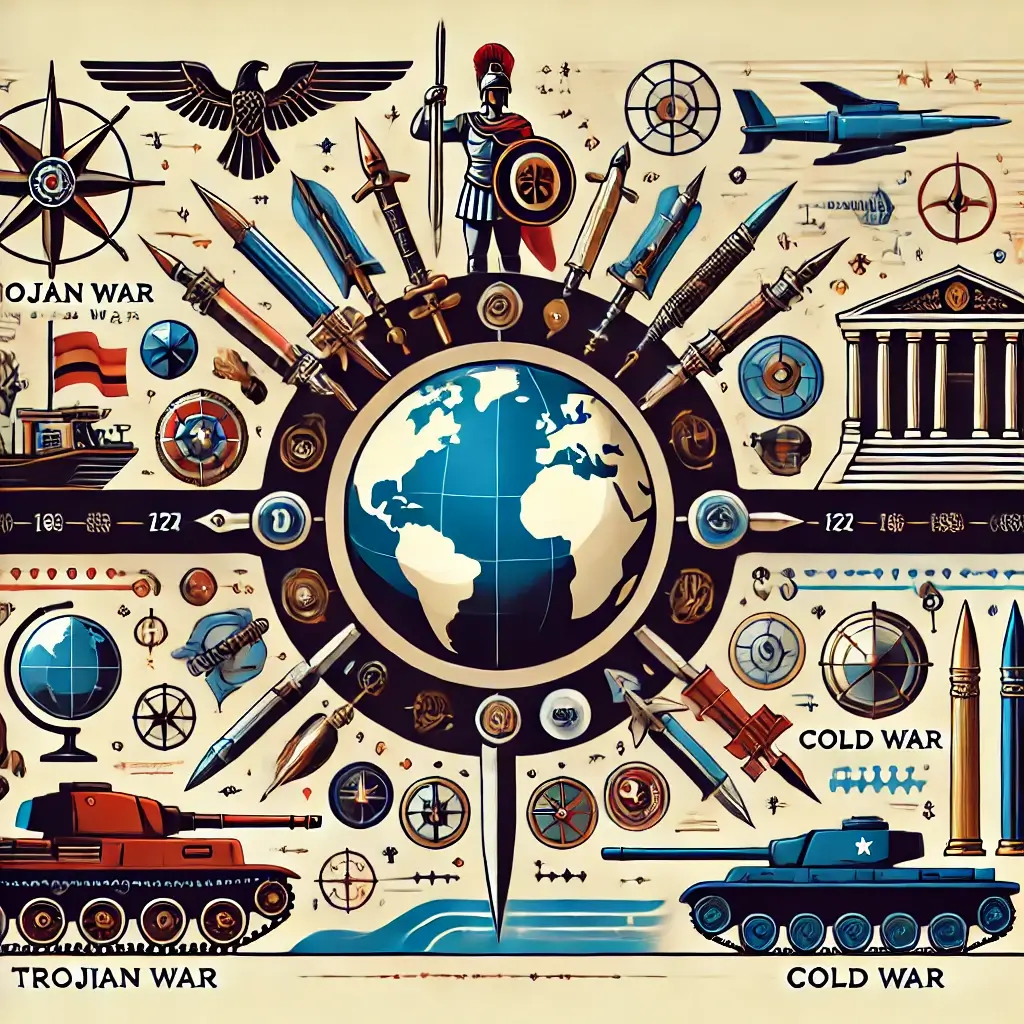
Timeline of Global Conflicts
Global wars have a long history, spanning thousands of years. Each conflict has had a profound impact on society, politics, and the economy. The timeline of global conflicts, from the Trojan War to the Cold War, shows our struggles and resilience.
Ancient Conflicts
- Trojan War (Approx. 12th Century BCE):
- A legendary battle between the Greeks and Trojans, sparked by the abduction of Helen.
- Immortalized in Homer’s Iliad, it remains a cultural touchstone for understanding ancient warfare.
- Greco-Persian Wars (499–449 BCE):
- Greek city-states united to repel Persian invasions.
- Preserved Greek independence and influenced Western political thought.
Medieval and Early Modern Conflicts
- The Crusades (1096–1291):
- Religious wars initiated by European Christians to reclaim the Holy Land from Muslim rule.
- Strengthened cultural exchanges but also intensified religious tensions.
- The Hundred Years’ War (1337–1453):
- A prolonged struggle between England and France, marking the end of medieval warfare.
- Helped shape the national identities of both nations.
Modern Global Conflicts
- The Seven Years’ War (1756–1763):
- Often called the first global war, involving battles across five continents.
- Redefined colonial power structures, with Britain emerging as a dominant force.
- World War I (1914–1918):
- Known as the Great War, it introduced industrialized warfare and left empires in ruins.
- World War II (1939–1945):
- The deadliest conflict in history, ending with the establishment of the United Nations.
- The Cold War (1947–1991):
- An ideological and geopolitical struggle between the U.S. and the Soviet Union, marked by proxy wars and technological advancements.
Timeline of Key Global Wars
| War | Time Period | Major Impact |
|---|---|---|
| Trojan War | 12th Century BCE | Cultural legacy in literature |
| Greco-Persian Wars | 499–449 BCE | Preserved Greek independence |
| Seven Years’ War | 1756–1763 | Britain’s colonial dominance |
| World War II | 1939–1945 | Foundation of modern global order |
Affiliate Link
Discover tools to study the timeline of global conflicts here.
References:
- Britannica: Timeline of Major Wars
- HistoryExtra: World Wars Timeline
- National Geographic: Historical Conflicts
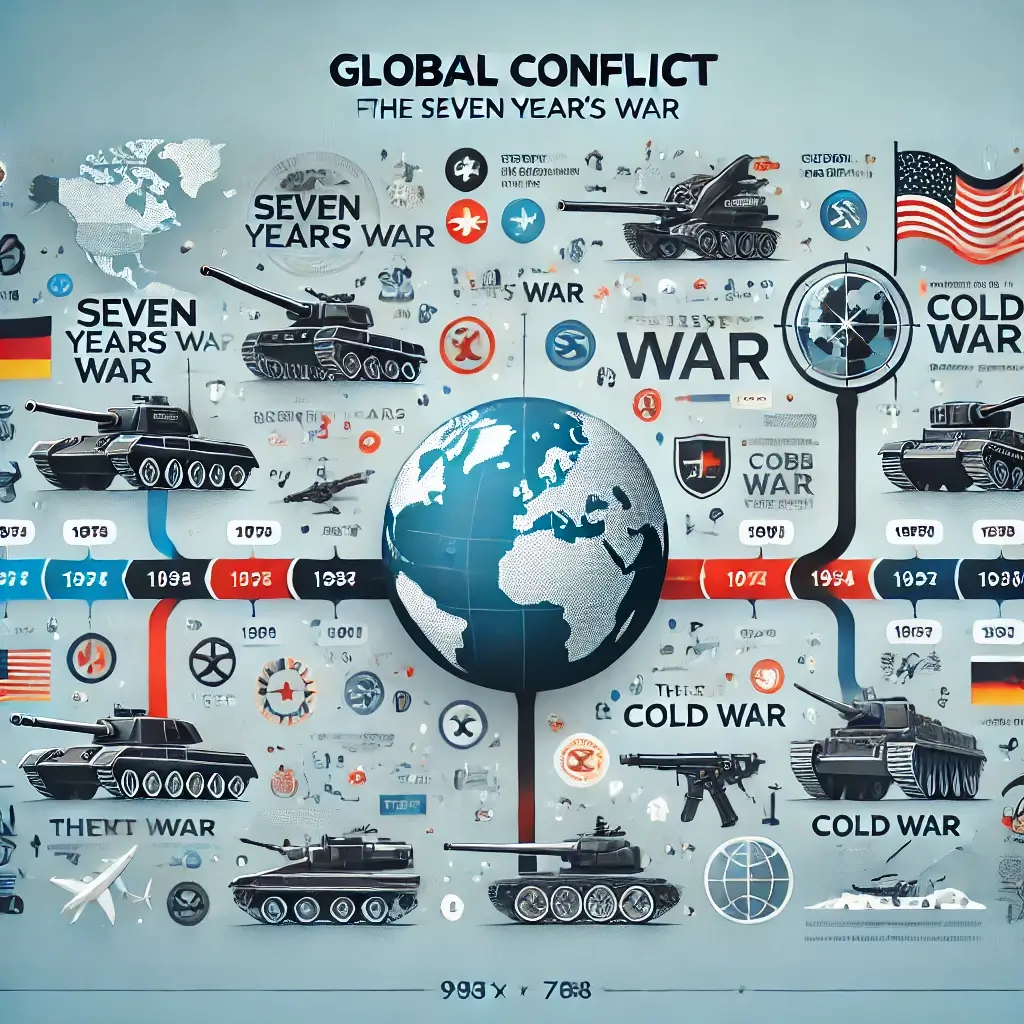
The Role of World Wars in Shaping the Modern World
The World Wars—World War I (1914-1918) and World War II (1939-1945)—are the most important conflicts in modern history. These wars caused great devastation, but they also created new political systems, global institutions, and advanced technology.
World War I: The Great War
- Causes:
- World War I was triggered by the assassination of Archduke Franz Ferdinand of Austria but rooted in deeper issues like militarism, alliances, imperialism, and nationalism.
- Major alliances included the Allied Powers (France, Britain, Russia) and the Central Powers (Germany, Austria-Hungary, Ottoman Empire).
- Impact:
- The war resulted in the collapse of empires, including the Austro-Hungarian, Ottoman, and Russian Empires.
- The Treaty of Versailles placed harsh reparations on Germany, sowing seeds for future conflict.
World War II: A Global Catastrophe
- Causes:
- The unresolved tensions from World War I, coupled with the rise of fascist regimes in Germany, Italy, and Japan, led to World War II.
- The invasion of Poland by Nazi Germany in 1939 marked the beginning of the war.
- Impact:
- Over 70 million people perished, making it the deadliest conflict in history.
- The war ended with the defeat of the Axis Powers and the establishment of the United Nations to promote global peace.
Technological Advancements During the Wars
- World War I: Introduced tanks, machine guns, and chemical warfare.
- World War II: Saw innovations in radar, aviation, and nuclear technology, revolutionizing modern warfare.
Political and Social Outcomes
- New World Order:
- World War I led to the League of Nations, while World War II resulted in the United Nations.
- The geopolitical rivalry between the U.S. and the Soviet Union initiated the Cold War.
- Human Rights Movements:
- The atrocities of World War II, such as the Holocaust, highlighted the need for universal human rights, culminating in the Universal Declaration of Human Rights.
Comparison of World Wars
| Aspect | World War I | World War II |
|---|---|---|
| Duration | 1914–1918 | 1939–1945 |
| Death Toll | ~20 million | ~70 million |
| Key Outcome | Treaty of Versailles | Formation of the UN |
Affiliate Link
Explore resources on the impacts of World Wars here.
References:
- Britannica: World War I Overview
- History.com: World War II Timeline
- United Nations: Origins and Purpose

The Cold War and Proxy Conflicts
The Cold War (1947–1991) was a time of fierce rivalry. It was ideological. It was between the U.S. and the Soviet Union. Unlike conventional wars, it had proxy wars, an arms race, and a struggle for global influence. This period reshaped global politics and introduced new forms of conflict.
Key Characteristics of the Cold War
- Ideological Rivalry:
- The U.S. promoted capitalism and democracy, while the Soviet Union advocated communism and socialism.
- This divide influenced global alliances and internal policies of countries worldwide.
- Arms and Space Races:
- Both superpowers developed massive nuclear arsenals, leading to the concept of Mutually Assured Destruction (MAD).
- The Cold War also extended into space, with the Soviet launch of Sputnik and the U.S. moon landing symbolizing technological superiority.
Proxy Wars: Fighting Without Direct Conflict
Instead of directly engaging each other, the U.S. and the Soviet Union supported opposing sides in regional conflicts:
- Korean War (1950–1953): North Korea, backed by the USSR, and South Korea, supported by the U.S., fought to a stalemate.
- Vietnam War (1955–1975): The U.S. aimed to prevent the spread of communism in Vietnam but faced resistance from Soviet-backed forces.
- Afghan-Soviet War (1979–1989): Soviet forces invaded Afghanistan, while the U.S. provided aid to mujahideen fighters.
Impact of the Cold War
- Global Alliances:
- The Cold War divided the world into two camps, leading to the creation of NATO and the Warsaw Pact.
- Economic Strain on the Soviet Union:
- The USSR’s excessive military spending contributed to its eventual collapse in 1991.
- Technological Advancements:
- Military competition spurred innovations in computers, satellites, and defense systems, many of which had civilian applications.
Key Proxy Wars During the Cold War
| Proxy War | Superpowers Involved | Outcome |
|---|---|---|
| Korean War | U.S. (South), USSR (North) | Division into North and South Korea |
| Vietnam War | U.S. (South), USSR (North) | Unification under communism |
| Afghan-Soviet War | USSR, U.S. support to rebels | Soviet withdrawal and instability |
Lessons from the Cold War
The Cold War highlighted the dangers of ideological extremism and nuclear escalation. It also demonstrated the power of diplomacy in preventing direct conflicts between major powers.
Affiliate Link
Explore resources on Cold War strategies and their impact here.
References:
- Britannica: Cold War Overview
- Council on Foreign Relations: Proxy Wars
- History.com: Cold War Timeline
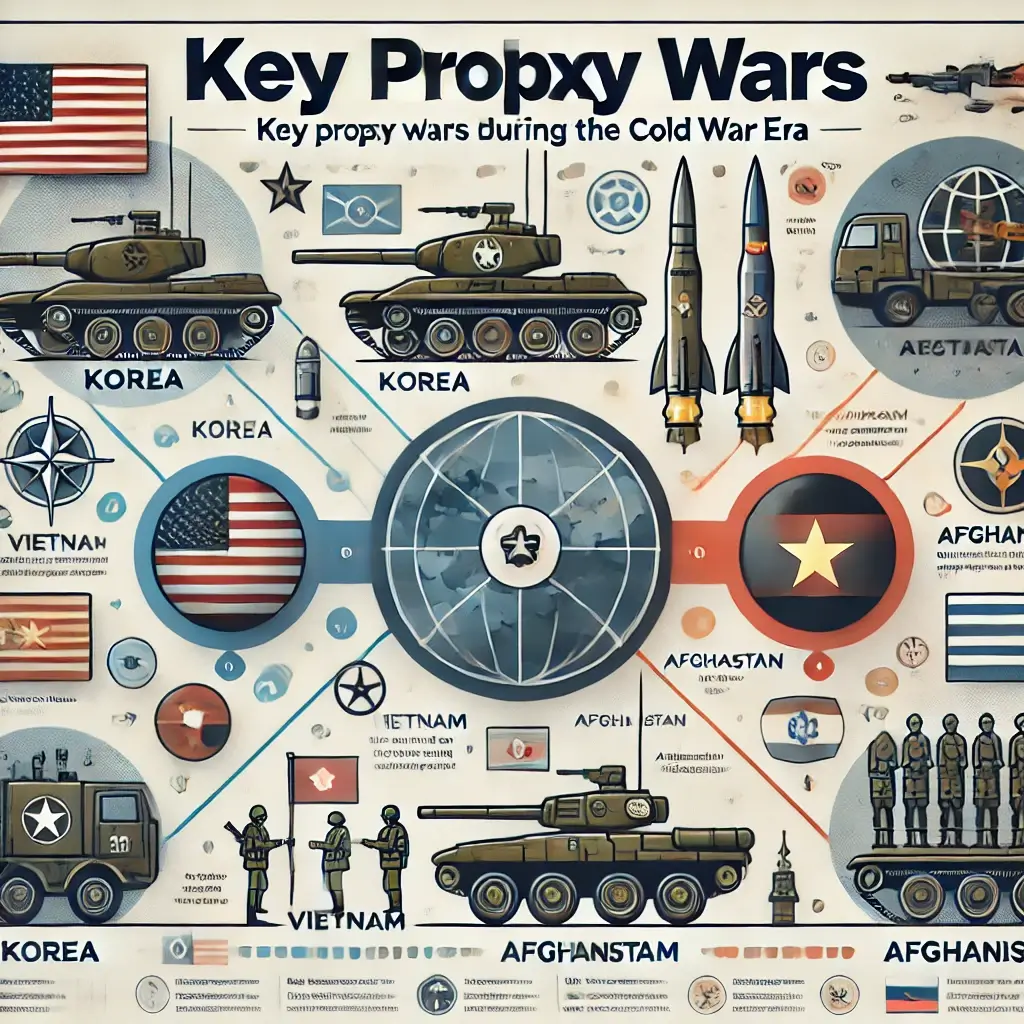
Modern Conflicts and Emerging Trends in Warfare
The 21st century has seen new forms of warfare. Technology and changing global politics drive them. Modern conflicts now use hybrid methods, cyber tactics, and advanced tech. They don’t rely only on traditional military strategies.
Key Characteristics of Modern Conflicts
- Cyber Warfare:
- Nations and non-state actors use cyberattacks to disrupt critical infrastructure, steal data, and influence elections.
- Examples include attacks on Ukraine’s power grid and alleged interference in U.S. elections.
- Hybrid Warfare:
- Combines conventional combat with propaganda, cyberattacks, and economic sanctions.
- Russia’s actions in Ukraine, involving misinformation campaigns and irregular forces, exemplify hybrid tactics.
- Asymmetric Warfare:
- Smaller forces use unconventional methods, such as guerrilla tactics and terrorism, to counter superior militaries.
Examples of Modern Conflicts
- War on Terror (2001–Present):
- Initiated after the 9/11 attacks, targeting terrorist organizations like Al-Qaeda and ISIS.
- Spread across multiple regions, including Afghanistan, Iraq, and Syria.
- Russia-Ukraine Conflict (2014–Present):
- Escalated from the annexation of Crimea to a full-scale invasion in 2022.
- Highlights the role of hybrid and cyber tactics.
- China’s Territorial Disputes:
- Includes tensions in the South China Sea and along the India-China border.
- Reflects power struggles over strategic waterways and resources.
Impact of Modern Warfare
- Technological Evolution:
- Drones, artificial intelligence, and autonomous weapons are redefining combat.
- Cybersecurity is now as critical as physical defenses.
- Economic and Social Disruption:
- Conflicts disrupt global supply chains, energy markets, and migration patterns.
- Ethical Concerns:
- Autonomous weapons raise questions about accountability and morality in warfare.
Key Features of Modern Warfare
| Feature | Example | Impact |
|---|---|---|
| Cyber Warfare | Ukraine’s power grid attack | Disruption of civilian infrastructure |
| Hybrid Warfare | Russia in Ukraine | Blurs lines between war and peace |
| Drone Technology | U.S. drone strikes | Precision attacks with reduced risks |
Lessons for the Future
Modern conflicts demand stronger international regulations and diplomacy. Nations must address the ethical implications of advanced weapons while preparing for unconventional threats.
Affiliate Link
Explore strategies and tools for addressing modern warfare here.
References:
- Council on Foreign Relations: Global Conflicts
- BBC: Russia-Ukraine Conflict Timeline
- Wired: Cyber Warfare in Modern Conflicts
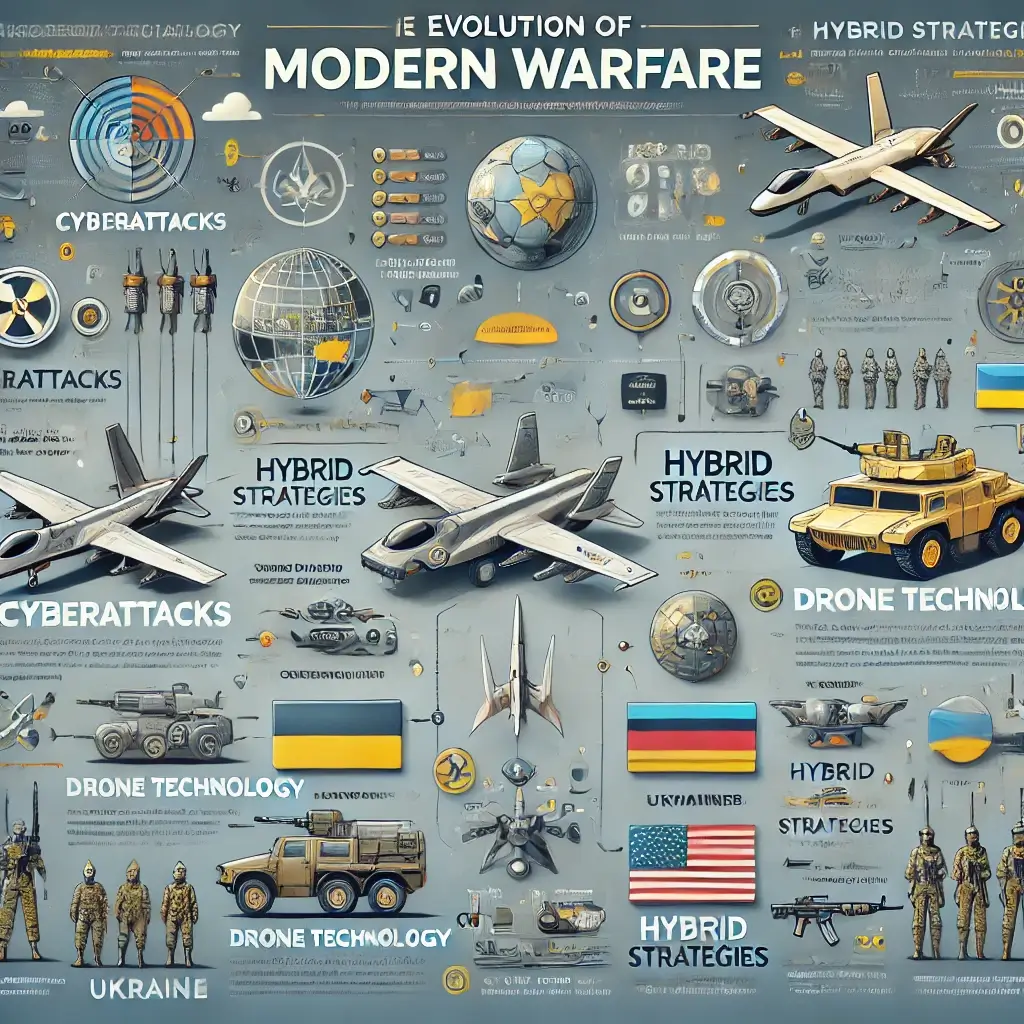
Socio-Political Impacts of Global Wars
Global wars have reshaped societies and politics in ways that still resonate today. These conflicts shaped cultural norms, economies, and politics worldwide. Wars have shaped modern civilization. They ended empires and created global institutions. We must understand their impacts to appreciate this.
Political Impacts
- Redrawing Borders:
- Major wars like World War I and II led to new national boundaries, altering the geopolitical landscape.
- The Treaty of Versailles, for example, redrew European borders and dissolved empires like Austro-Hungary.
- Rise of Global Institutions:
- Wars spurred the creation of organizations like the United Nations and NATO to prevent future conflicts and promote peace.
- These institutions became key players in global governance.
Social Impacts
- Cultural Shifts:
- Wars accelerated social changes, including women entering the workforce during World Wars.
- Movements for civil rights and equality gained momentum as marginalized groups contributed to war efforts.
- Migration and Refugees:
- Conflicts displaced millions, creating refugee crises that reshaped demographics. For example, World War II saw widespread migration across Europe and Asia.
Economic Consequences
- Reconstruction and Growth:
- Post-war reconstruction efforts, such as the Marshall Plan, revitalized economies.
- Wartime innovations like radar and penicillin spurred industrial and technological advancements.
- Resource Redistribution:
- Wars often shifted control of key resources, such as oil, influencing global economies.
Key Socio-Political Impacts of Global Wars
| Impact Type | Example | Long-Term Effect |
|---|---|---|
| Political | Treaty of Versailles | Redrew European borders |
| Social | Women’s Workforce Entry | Advanced gender equality |
| Economic | Marshall Plan | Rebuilt and strengthened economies |
Lessons from Socio-Political Impacts
Global wars highlight the interconnectedness of societies and the need for diplomacy. The challenges of post-war recovery emphasize the importance of addressing inequality and fostering sustainable development.
Affiliate Link
Discover more about the socio-political effects of wars here.
References:
- Britannica: Treaty of Versailles Overview
- United Nations: UN Formation History
- National Geographic: Migration Patterns Post-War
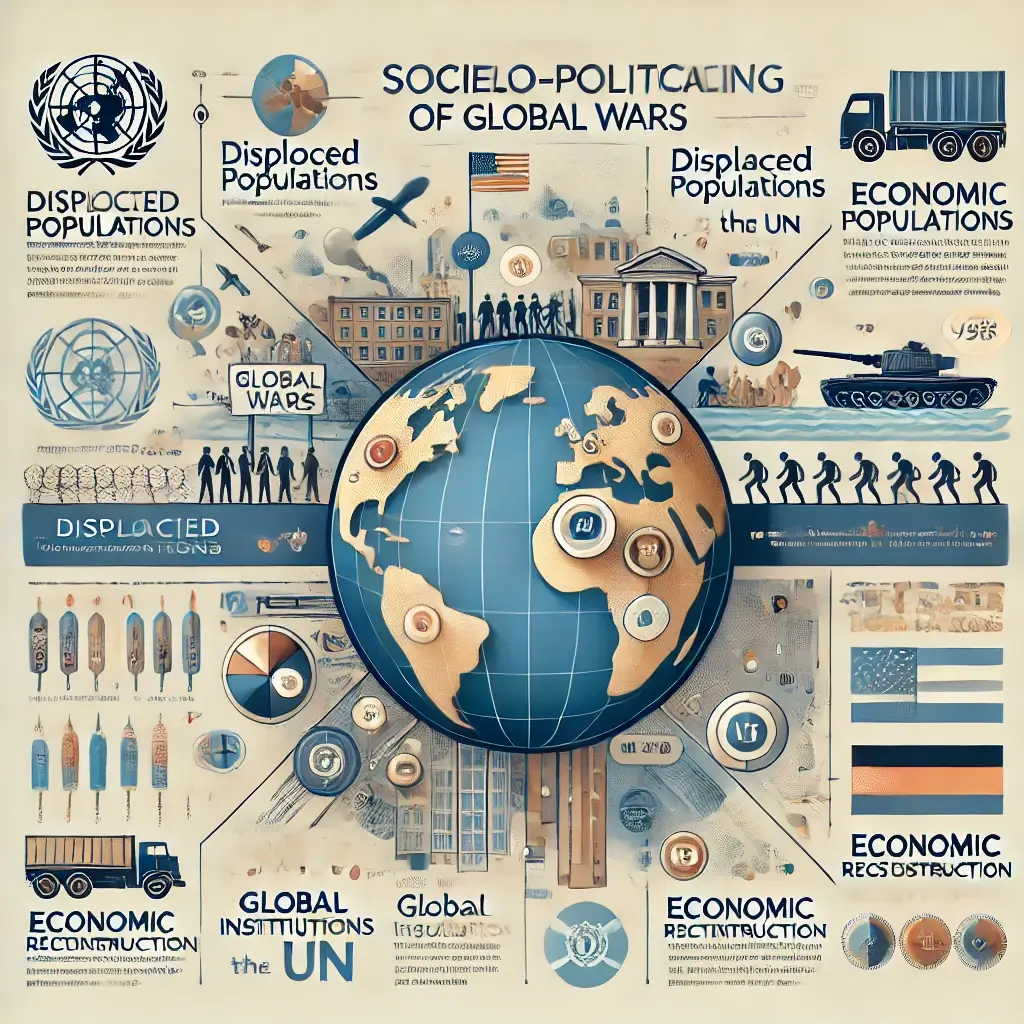
The Future of Warfare
Warfare evolves with new technology and shifting global powers. New tech will shape future conflicts. This includes AI, cyber weapons, and space militarization. This shift brings both opportunities and challenges for global security.
Key Trends in Future Warfare
- Artificial Intelligence and Automation:
- AI-driven drones and autonomous weapons are transforming battlefield strategies.
- Predictive algorithms analyze enemy movements and recommend tactical decisions.
- Cyber Warfare:
- Cyberattacks target infrastructure, financial systems, and government operations.
- Recent examples include ransomware attacks and election interference campaigns.
- Space Militarization:
- Nations are developing satellite defense systems and space-based weapons.
- The militarization of space raises concerns about its potential to escalate conflicts.
Impact of Emerging Technologies
- Ethical Concerns:
- The use of AI in weapons raises questions about accountability and decision-making in war.
- Autonomous systems may operate without direct human control, increasing risks.
- Economic Implications:
- Investments in advanced technology strain national budgets, especially in developing nations.
- Technological superiority could widen the gap between powerful and weaker nations.
- Global Alliances:
- Partnerships to counter cyber and space threats may lead to new military coalitions.
Chart: Comparison Between Traditional and Future Warfare
| Aspect | Traditional Warfare | Future Warfare |
|---|---|---|
| Nature of Combat | Ground battles | AI-driven and cyber-based |
| Technology’s Role | Supportive | Central to strategy |
| Key Threats | Conventional weapons | Cyberattacks, space militarization |
Lessons for Policymakers
Preparing for future conflicts requires global cooperation and regulation of emerging technologies. Policies should address ethics. They should promote transparency and fair access to defense tech.
Affiliate Link:
Discover strategies and tools to address the future of warfare here.
References:
- Wired: AI in Modern Warfare
- Council on Foreign Relations: Cybersecurity in Warfare
- Space.com: Space Militarization and Global Security
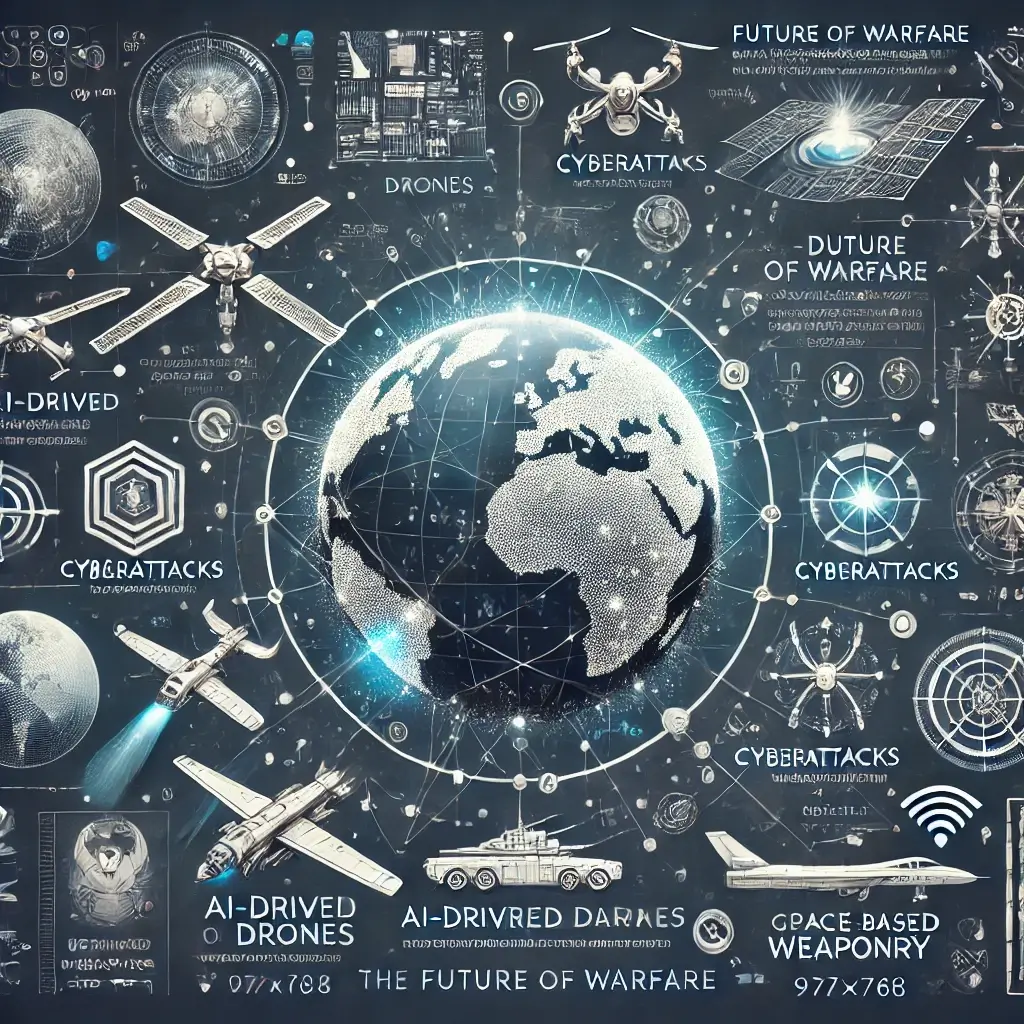
The Role of Technology in Shaping Global Wars
The history of global wars has been defined by technological progress. Each major conflict has brought new inventions that reshaped strategies and outcomes. Technology has always shaped global conflicts. It influenced them from early battles with basic tools to modern wars with AI and satellites.
During World War I, innovations like tanks and machine guns changed the battlefield. For the first time, industrialized weapons caused large-scale destruction. Aerial reconnaissance allowed armies to watch their enemies, making combat more strategic. These technologies marked the beginning of modern conflict as we know it.
In World War II, radar systems and nuclear weapons became game changers. Radar helped the Allies track enemy movements. Nuclear technology ended the war but created tension during the Cold War. This era saw the rise of proxy wars and the arms race as countries competed to develop superior weapons.
Today, modern warfare relies heavily on cyber warfare and hybrid strategies. Nations use cyberattacks to disrupt critical infrastructure, steal data, and weaken opponents. AI in warfare has introduced tools like autonomous drones and predictive analytics. These advancements improve precision but raise concerns about ethics and accountability.
The future of warfare will likely involve space militarization. Satellites already control navigation, communication, and surveillance. Nations are developing space-based defense systems. This raises questions about regulating this new frontier. Space, once a symbol of exploration, could become a battlefield.
Technology has made conflicts faster and deadlier. Yet, it also shows the need for global cooperation. Nations must collaborate to regulate these advancements and ensure responsible use of technology. By balancing innovation with ethics, we can ensure a safer future for all.
Explore tools and strategies for understanding modern conflicts and emerging trends here.
Frequently Asked Questions (FAQs)
1. What was the first global war in history?
The Seven Years’ War (1756–1763) is widely regarded as the first global war. It involved battles across Europe, North America, Asia, and Africa, making it a worldwide conflict.
2. How did the World Wars impact modern history?
The World Wars reshaped global politics by dismantling empires, creating the United Nations, and accelerating technological advancements like radar and nuclear energy. They also led to the Cold War and decolonization.
3. What are the key characteristics of modern conflicts?
Modern conflicts are defined by cyber warfare, hybrid tactics, and the use of advanced technologies like drones and AI. These wars often target critical infrastructure and rely heavily on non-conventional strategies.
4. Why is space militarization a concern?
Space militarization could lead to an arms race in space, disrupting satellite-based communications and navigation. It also raises concerns about the weaponization of space, which could escalate future conflicts.
5. What are the socio-political impacts of wars?
Wars often lead to border changes, the rise of global institutions, and major cultural shifts. For example, the United Nations was established after World War II to promote peace and prevent future conflicts.
6. How is AI changing the nature of warfare?
AI enables autonomous weapons, predictive analytics, and faster decision-making. While it increases efficiency, it also raises ethical questions about accountability and human oversight.
7. How can nations prepare for future warfare?
Nations must invest in cybersecurity, regulate advanced weapons, and foster international cooperation to address the challenges posed by emerging technologies and hybrid conflicts.
Affiliate Link
Explore tools to understand and address modern warfare strategies here.
References:
- Britannica: Seven Years’ War Overview
- United Nations: Global Peace Efforts
- Wired: AI in Warfare
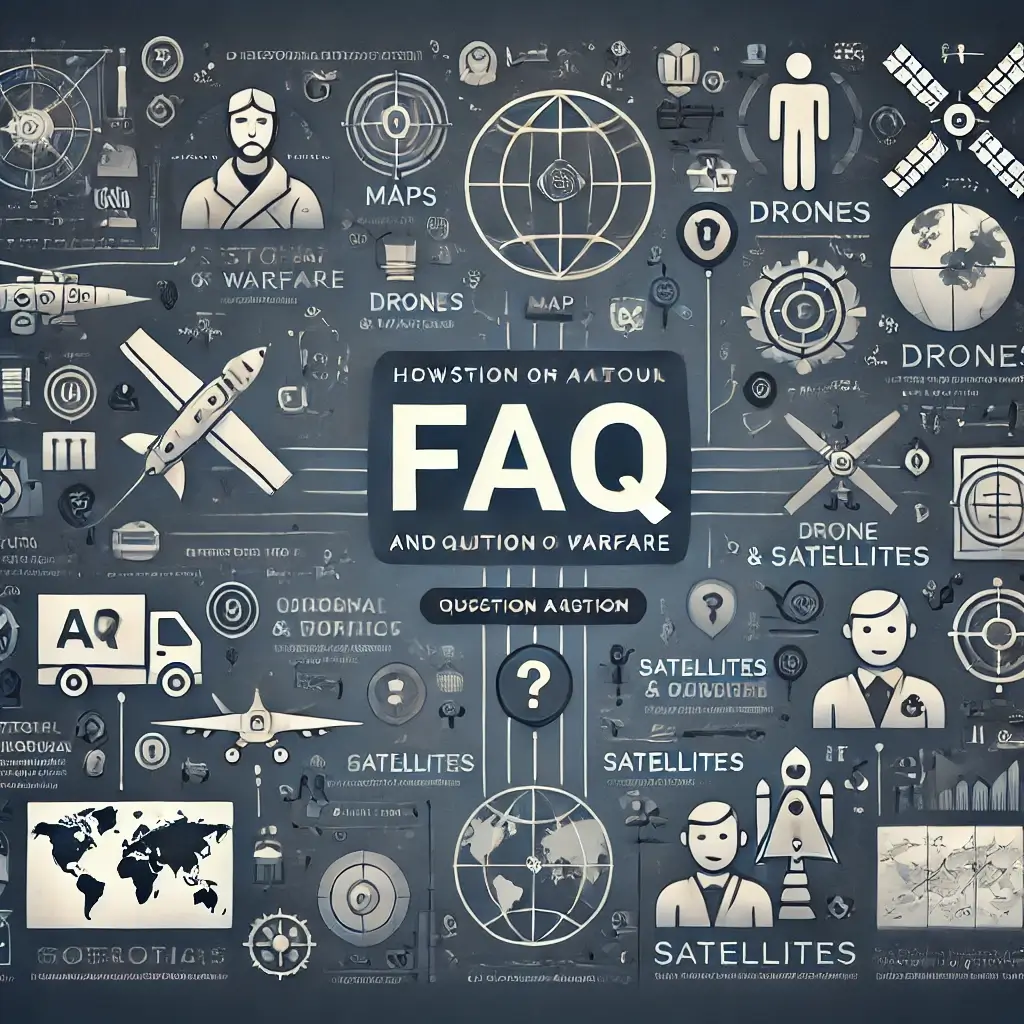
Conclusion of History of Global Wars
Global wars’ history teaches us about conflict, resilience, and the search for peace. From the first global conflict, the Seven Years War. These events have shaped civilizations, shifted global power, and advanced technology. They have also modernized hybrid and cyber warfare.
Wars often drive change, spark innovation, and create global institutions like the UN. They have caused great suffering. This shows the need for diplomacy and cooperation to prevent future conflicts.
The future holds new challenges. Warfare will combine AI, space militarization, and cyber capabilities. Nations must work together. They should regulate new technologies and focus on ethics. This is vital for the responsible navigation of these developments.
By studying the past and preparing for the future, we can seek a world where peace prevails over conflict.
Affiliate Link
Explore resources to study the impacts of warfare and technological advancements here.
References:
- Britannica: Global Conflict Overview
- United Nations: Peace Efforts and Institutions
- Wired: Emerging Warfare Technologies
